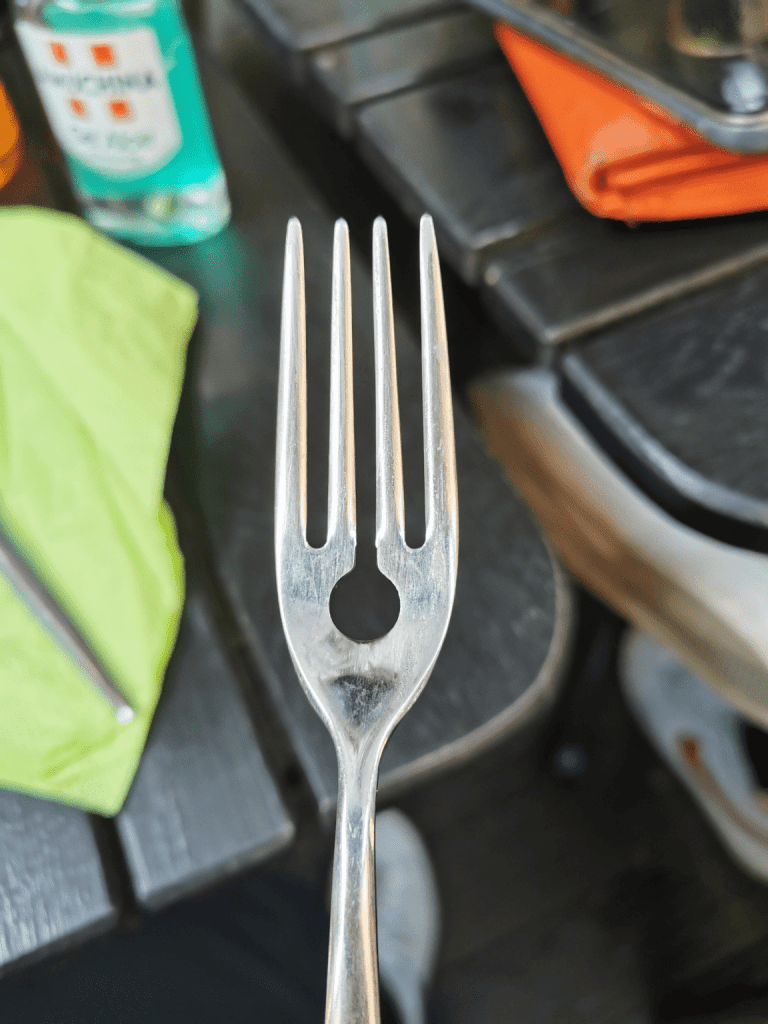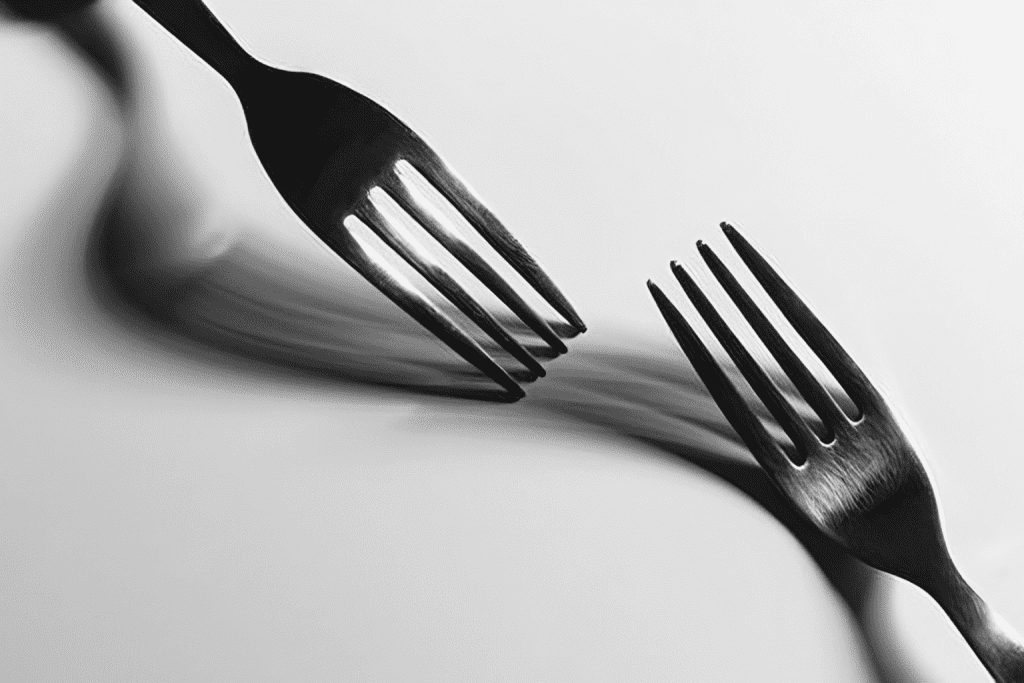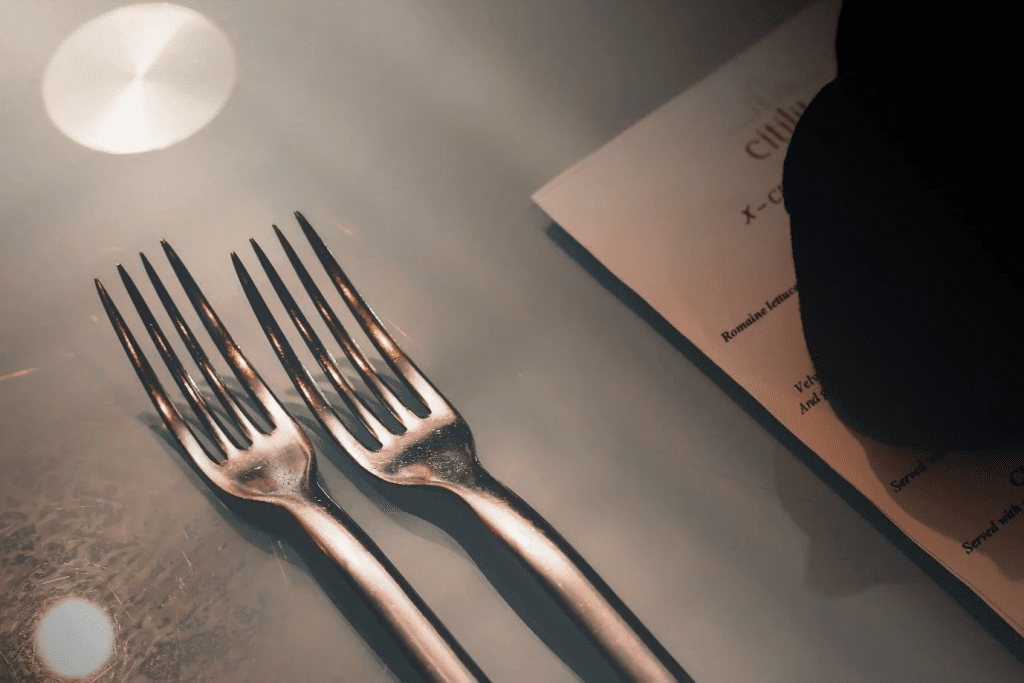The humble fork is a staple at dining tables worldwide, yet few of us stop to think about its design, particularly the prongs, or “tines,” and why most forks feature exactly four. Ever wondered why this design is so ubiquitous? In this article, we’ll dive into the history, anatomy, and functionality of the four-tined fork, exploring the evolution of this essential eating tool.

Understanding Fork Design: More Than Just a Handle and Prongs
At first glance, a fork seems quite simple: a handle attached to several tines. However, this straightforward tool is the result of centuries of refinement and cultural influence. The fork’s design has evolved significantly, driven by a balance between aesthetics, practicality, and material innovations. With each change, the fork has become a more efficient tool for various culinary tasks.
What Are Fork Prongs Really Called?
You may know them as prongs, but the technical term for these extensions is “tines.” While this might seem like a minor detail, understanding the terminology becomes essential when distinguishing different types of forks. Various forks, such as carving forks, dessert forks, and salad forks, feature different numbers of tines to suit specific tasks. However, the standard dining fork almost always has four – a design choice that has stood the test of time.
A Brief History of Fork Prongs: From Ancient Origins to Modern Design
Forks trace their roots back to ancient civilizations, with early versions used in the Roman Empire. Back then, forks often had just two or three tines, useful for spearing chunks of meat or other foods. This design lasted for centuries, but by the 11th century, forks began to look more like the ones we use today, gaining popularity in Italy and spreading across Europe.
By the late 18th century, forks had commonly transitioned to the four-pronged design. This evolution was driven by a desire for greater versatility, as more tines allowed for easier handling of different types of food. The four-tined fork soon became the standard, with its form largely unchanged to this day.
The Functional Benefits of Four Prongs: Stability, Balance, and Versatility
So, why four prongs? It turns out this design isn’t arbitrary but rather a deliberate choice based on functionality:
- Stability: Four tines provide a balanced surface, making it easier to spear, scoop, and balance a variety of foods.
- Efficiency: With four tines, the fork has enough surface area to support a wide range of textures, from soft vegetables to denser meats, without overcrowding or reducing strength.
- Versatility: Whether you’re dining on a salad, pasta, or steak, four tines offer a perfect middle ground, allowing the fork to tackle a variety of dishes with ease.
In short, the four-pronged fork is a versatile tool capable of handling everything from fine dining to casual meals, offering stability and precision for the diner.

Material Matters: How Fork Materials Influence Design and Function
The material used to make forks also plays a critical role in their effectiveness and durability. Traditional forks were often crafted from silver or steel, materials that offer both strength and flexibility. These properties allowed for thin tines that wouldn’t bend or break easily, making four tines the ideal choice.
With the advent of modern manufacturing, stainless steel became a popular material, offering corrosion resistance, longevity, and ease of maintenance. The strength of these materials enables the creation of slender yet sturdy tines, adding to the efficiency and elegance of the four-tined design. Additionally, modern techniques allow for uniformity and precision, which further enhances the fork’s functionality and aesthetic appeal.
Comparing the Four-Tined Fork to Other Fork Types

While the four-tined fork is a standard dining tool, many other fork designs feature different numbers of tines tailored for specific culinary purposes:
- Carving Forks: These have two long, sharp tines and are typically used to hold meat steady while carving.
- Fish Forks: Often featuring three tines, these are designed to handle delicate fish without breaking it apart.
- Dessert Forks: Generally have three or four shorter, narrower tines, making them ideal for cutting through cakes and pastries.
These variations demonstrate the practicality of the four-tined fork for general dining, as it strikes a balance between versatility and functionality not found in more specialized designs.
Cultural Influences on Fork Design: The Impact of Tradition and Cuisine
Culture and cuisine significantly shape how utensils are designed and used around the world. In Western cultures, the four-tined fork has become a dining standard due to its practicality. In contrast, in many Asian cultures, chopsticks are the utensil of choice, highlighting how eating habits and traditional foods influence the tools we use. As global dining becomes more diverse, understanding these cultural nuances provides insight into why certain tools, like the four-tined fork, have gained widespread acceptance.

The Science of Ergonomics: Studies on Fork Efficiency
Several studies have examined the efficiency of different fork designs, and experts frequently conclude that four tines strike the ideal balance for most eating tasks. Culinary experts also highlight that four tines offer the best grip for foods of varying textures, from soft pasta to firm vegetables. Interestingly, research suggests that adding more tines could make a fork more effective at food capture but would also make it bulkier and more prone to bending, making the four-tined design an optimal compromise.
Conclusion: The Four-Pronged Fork – A Timeless Blend of Form and Function
The four-pronged fork is far more than a simple eating tool; it’s a testament to centuries of refinement, shaped by cultural evolution and practical considerations. Its four-tine design offers the perfect balance of stability, versatility, and durability, making it the go-to utensil for dining tables around the world. Next time you pick up your fork, take a moment to appreciate the history, science, and cultural influences behind this iconic utensil. It’s a small reminder that even the simplest tools can have a rich and fascinating backstory.


